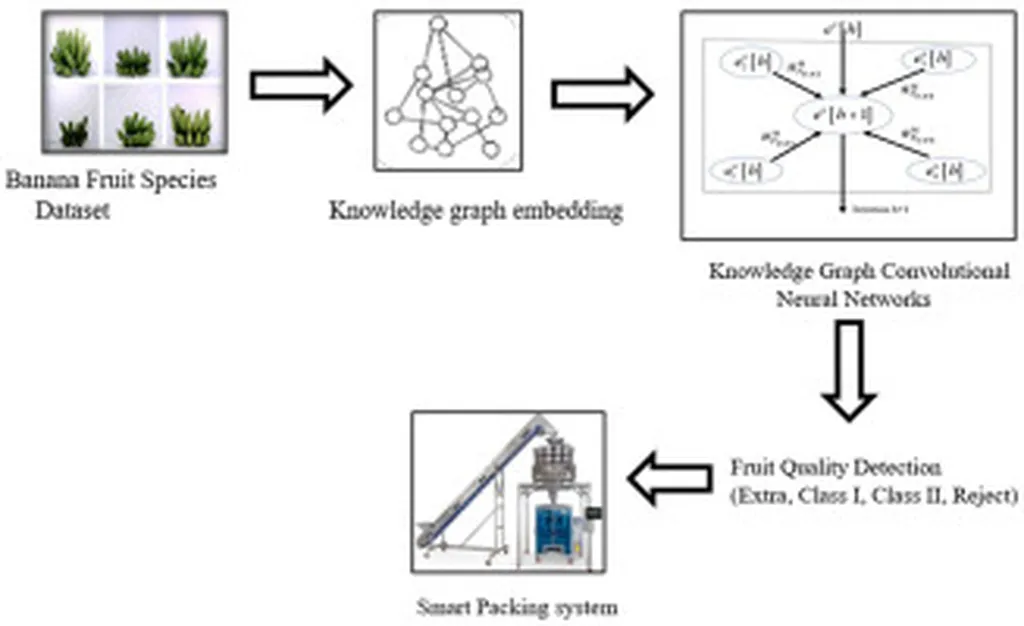In the rapidly evolving landscape of agricultural technology, a groundbreaking study led by Yuan Huan and colleagues from the Agricultural Information Institute at the Chinese Academy of Agricultural Sciences is making waves. Their research, published in the journal ‘智慧农业’ (translated as ‘Smart Agriculture’), explores the transformative potential of Graph Neural Networks (GNNs) in constructing agricultural knowledge graphs (AKGs). This innovation could revolutionize how we approach data-driven agriculture, offering unprecedented precision and efficiency in knowledge representation, extraction, and service.
Graph Neural Networks have emerged as a powerful tool for analyzing complex relationships within data. Unlike traditional methods, GNNs excel at capturing intricate interactions and message passing among nodes in a graph, making them ideal for tasks such as knowledge representation, extraction, fusion, and inference. In the context of agriculture, this technology addresses unique challenges posed by multi-source heterogeneous data, dynamic spatio-temporal changes, and the need for interpretability.
“GNNs hold great promise in addressing the difficulties inherent in agricultural data,” explains Yuan Huan, the lead author of the study. “For instance, information from weather sensors, soil monitoring devices, and historical crop yield records varies significantly in format and type. The ability of GNNs to handle such heterogeneity is crucial.”
The research delves into five typical GNN models: recursive graph neural networks (RGNN), convolutional graph neural networks (CGNN), graph auto-encoder networks (GAE), graph attention networks (GAT), and spatio-temporal graph neural networks (STGNN). Each model offers distinct advantages in graph feature extraction, enabling tasks such as dynamic updates, knowledge completion, and complex relationship modeling. For example, STGNNs are particularly adept at handling time-series and spatial data, which is prevalent in agriculture, enabling more accurate prediction of crop growth patterns.
One of the most compelling aspects of this research is its potential to enhance entity recognition and disambiguation. “When dealing with both textual descriptions of agricultural pests and corresponding image data, GNNs can effectively integrate these different modalities to accurately identify the pests,” says Yuan Huan. This capability is crucial for tasks like entity prediction, relation prediction, denoising, and anomaly information inference, significantly enhancing the construction quality of knowledge graphs.
The study also highlights the potential of GNNs in intelligent applications such as agricultural knowledge question answering, recommendation systems, yield prediction, and pest monitoring and early warning. By representing and predicting entities and relationships in agriculture, GNN-based AKGs can offer efficient knowledge services and intelligent solutions for sustainable agricultural development.
Looking ahead, the research team emphasizes the need for further exploration in key technologies like deep multi-source heterogeneous data fusion, knowledge graph evolution, scenario-based complex reasoning, and improving interpretability and generalization. “Future work should focus on these areas to fully realize the potential of GNN-based AKGs,” says Yuan Huan.
The implications of this research extend beyond the agricultural sector. The ability to handle complex, multi-source data and extract meaningful insights has significant commercial impacts for various industries, including energy. As we strive for more sustainable and efficient practices, the integration of GNNs into knowledge graphs could pave the way for smarter, data-driven decision-making.
In conclusion, the work of Yuan Huan and colleagues represents a significant step forward in the field of agricultural technology. By leveraging the power of Graph Neural Networks, we can unlock new possibilities for knowledge representation, extraction, and service, ultimately contributing to more sustainable and efficient agricultural practices. As this research continues to evolve, it holds the promise of transforming not just agriculture, but a wide range of industries that rely on complex data analysis.

